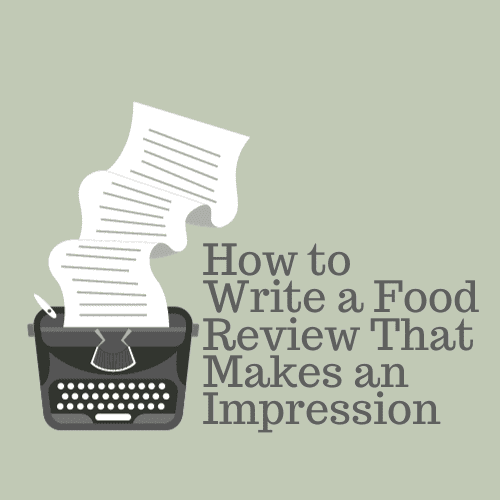
Writing a food review is more than just sharing your dining experience; it’s an art form that can transport readers to the culinary world you’ve experienced.
A well-crafted food review can influence where people dine and make or break a restaurant’s reputation.
This comprehensive guide’ll explore the essential elements of writing an effective food review that leaves a lasting impression.
Learn how to use your writing prowess to promote your favorite food or restaurant.
What Makes a Great Food Review?
Before we delve into the nitty-gritty of crafting a food review, let’s understand what makes a great one. A great food review is like a beautifully composed symphony — it engages all the senses, tells a compelling story, and leaves the audience satisfied but craving more. Here are the key components.
Set the Stage for the Readers
A great food review should transport readers to the restaurant you visited. It should create a vivid mental picture of the ambiance, making readers feel right there with you. After all, the setting plays a crucial role in the overall dining experience.
Share where the restaurant is located or where you obtained the food. Provide clear details about the ambiance or the aesthetics of the place.
Capture the Flavor of the Food in Words
Describing food is an art. Your words should tantalize the taste buds and evoke sensory reactions. A thorough food review should make the reader almost taste the dishes through your descriptions.
Describe what you can taste and even how it feels inside your mouth. For example, you can say that a chicken dish is tender and juicy, and the sauce combines the sweetness of honey with the tangy bite of mustard.
Educate the Reader About the Background of the Food
Food often has cultural, historical, or personal significance. Sharing context about the cuisine, ingredients, or cooking techniques can enrich the reader’s understanding and appreciation of the food.
You don’t need to dive too deep into the history of the cuisine, but it’s worth sharing if you can find or know some fun facts about the food you’re reviewing.
Compel the Reader To Take Action
A great food review should leave the reader with a clear and compelling call to action. Whether it’s urging them to visit the restaurant, try a specific dish, or avoid a particular item, your review should guide their dining decisions. As a food reviewer, you aim to help your readers spend their time and money on food worth it.
How To Craft a Tasteful Food Review
Now that we’ve outlined the essential elements, let’s break down how to craft a tasteful food review.
Writing a food review is a way of storytelling, and here’s what you need to do to tell an irresistible food story.
Do Some Background Research
Before you even step foot in the restaurant, do a little research. Check the restaurant’s website or social media pages to gather information about the menu, chef(s), and any special features they may offer.
This information will help you appreciate the restaurant’s context and potentially guide your dining choices. Researching the restaurant beforehand also lets you know which food you should not miss out on at the restaurant you want to try.
Describe the Ambiance of the Restaurant
Begin your review by setting the stage. Describe the restaurant’s ambiance, including its décor, lighting, music, and overall atmosphere. Is it a cozy, intimate setting or a bustling, lively one?
Paint a picture with your words so readers can imagine themselves there. Visualization is a flexible and effective storytelling trick you can apply to any written form.
If possible, Share the Menu With Your Readers.
If you can access the restaurant’s menu, consider sharing it with your readers. Sometimes, the restaurant already has its menu online, and you can just link to it.
This resource gives readers a sense of what to expect and lets them comment on various options. Mention any unique or signature dishes that caught your eye or that the location is known for.
Describe the Noticeable Details of the Food
Now, let’s dive into the main course of your review — the food itself. When describing your ordered dishes, pay attention to the presentation, aroma, and texture. First impressions matter most, so your first bite will determine your overall dining experience.
Share your initial reactions. Did the dish look appetizing? Did the aroma make your mouth water? Was the texture as expected? Play with your readers’ senses by detailing your food experience. Always document your initial reaction with your notes app or a notebook so you won’t forget your initial experience with the food.
Stay as Objective as Possible
While expressing your personal preferences and experiences is essential, strive for objectivity. What might not appeal to your taste buds could be a delicacy for someone else.
Remember that your review will influence others’ choices, so be fair in your assessment. It’s best to have someone with you to share their verdict on the food to have a fair judgment of the food and experience.
Be Specific About What You Like or Dislike
Vague statements like “the food was good” or “I didn’t like the dish” don’t provide much value to your readers. Instead, be specific about what you enjoyed or disliked. Describe the flavors, ingredients, and cooking techniques that stood out.
For example, instead of saying, “The steak was excellent,” you could say, “The perfectly grilled steak was juicy, tender, and seasoned to perfection, with a delightful smoky char.”
The Food Doesn’t Have To Be Perfect
Not every dish will be a masterpiece, and that’s okay. Acknowledging imperfections can lend credibility to your review.
Sharing overly negative reviews about the place can make it look like you want to sabotage the restaurant. In contrast, an extremely positive review may appear manufactured and inauthentic.
If a dish didn’t meet your expectations, explain why without being overly pessimistic. Constructive criticism can be helpful to both the restaurant and your readers.
Tell Your Readers If It’s Worth a Try
After evaluating the dishes, sum up your dining experience. Would you recommend this restaurant to others? Highlight the standout dishes, if any, and mention whether you’d return. Your final verdict is crucial in helping readers make their dining decisions.
It also helps to share what you want to try next or techniques to improve your reader’s eating experience. For example, if you’re reviewing a make-it-yourself ramen, you could recommend adding cheese or certain spices for a playful flavor.
Capture Mouthwatering Photos
A picture is worth a thousand words, and it’s worth even more in the world of food reviews. Take high-quality photos of the dishes you’re reviewing. Ensure good lighting and angles that showcase the food’s visual appeal.
A good photo is an excellent hook. It’s what makes most online readers click on your food review and keeps them reading. Embed these images in your review to give readers a visual taste of what you experienced.
If you don’t have a picture ready to pair with your food review, we can help. At KitchenBloggers, we help food writers make their content appealing with high-quality and licensed digital media.
Share Your Food Review
Once you’ve outlined and drafted your review, there’s only one task left on your checklist: to hit publish and share your review. Food is one of the most popular topics on the internet today, and it’s easy to deliver it to your target audiences in today’s fast-paced digital landscape.
Ensure your content is searchable online and inform your regular readers about your new food review. Local food reviews with enticing cover photos usually have better engagement than bland online food reviews.
Write Your First Food Review Today
Now that you comprehensively understand how to write a food review and what elements are important for success, it’s time to put your skills to the test.
Choose a restaurant you’ve recently visited or plan a dining experience at a new place. Follow our guidelines, and let your passion for food and writing shine through.
Remember, writing food reviews is not just about sharing your experiences — it’s about connecting with your readers and guiding them on their culinary adventures. Go ahead and write your first food review today, and who knows, your words might inspire someone to discover their new favorite restaurant or dish.
FAQs
How do you write a good food review?
A good food review contains complete details about the dish’s ingredients and graphics to show its presentation and texture. The reviewer should also include his or her personal experience with the dish to tell the reader what they like
How do you say food review?
The most important thing about saying or writing a food review is being honest about your feelings about the dish you are reviewing.
How do you write a review on a food blog?
If you like reviewing food, start your blog with a user-friendly tool like Wix or WordPress. Otherwise, you can also approach popular food blogs and ask them to allow you to publish on their platform.
What is the best compliment for a restaurant?
The best way to compliment a restaurant is to write about its food taste, presentation, and overall ambiance. You can also write about whether the restaurant is accessible for the handicapped and other such factors.
